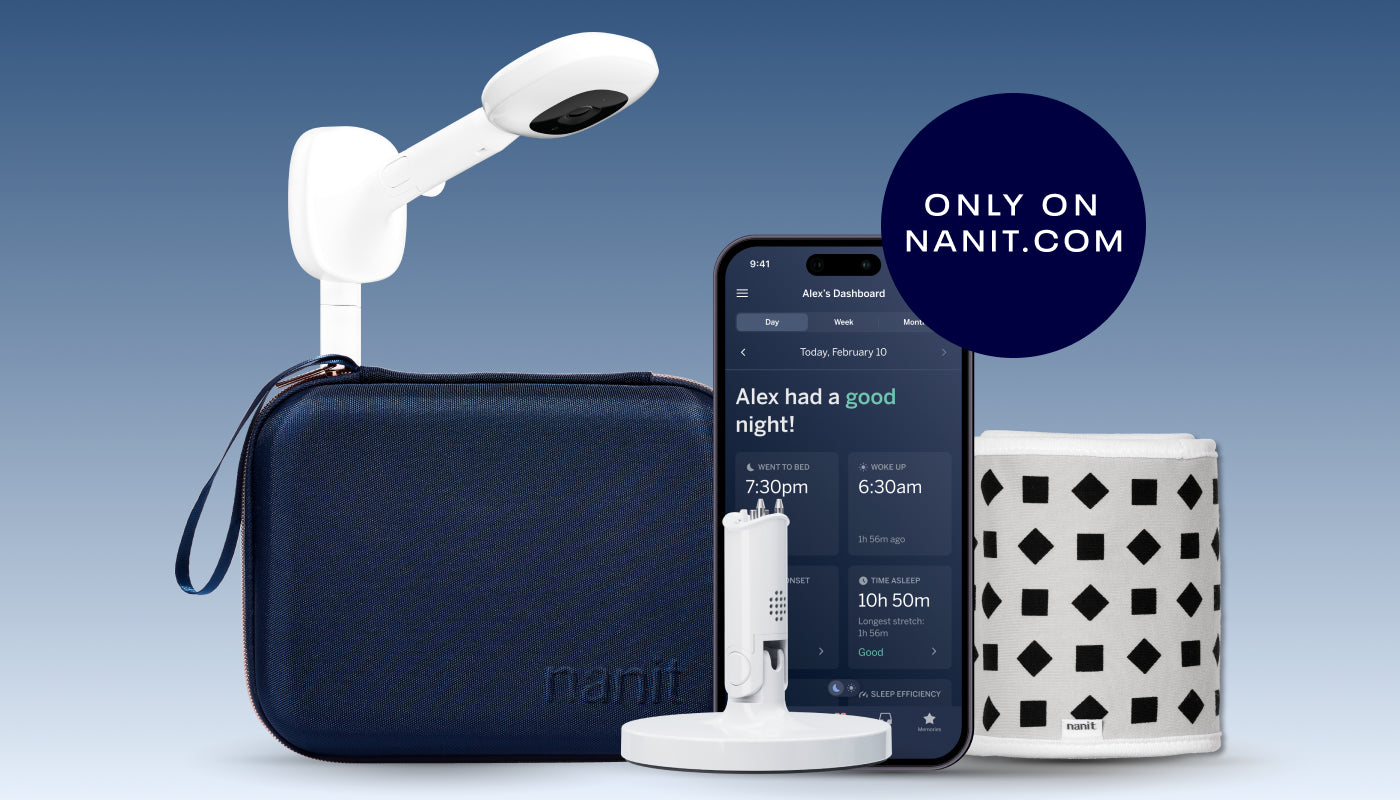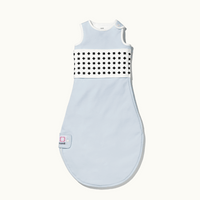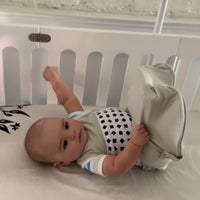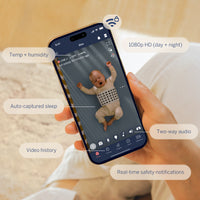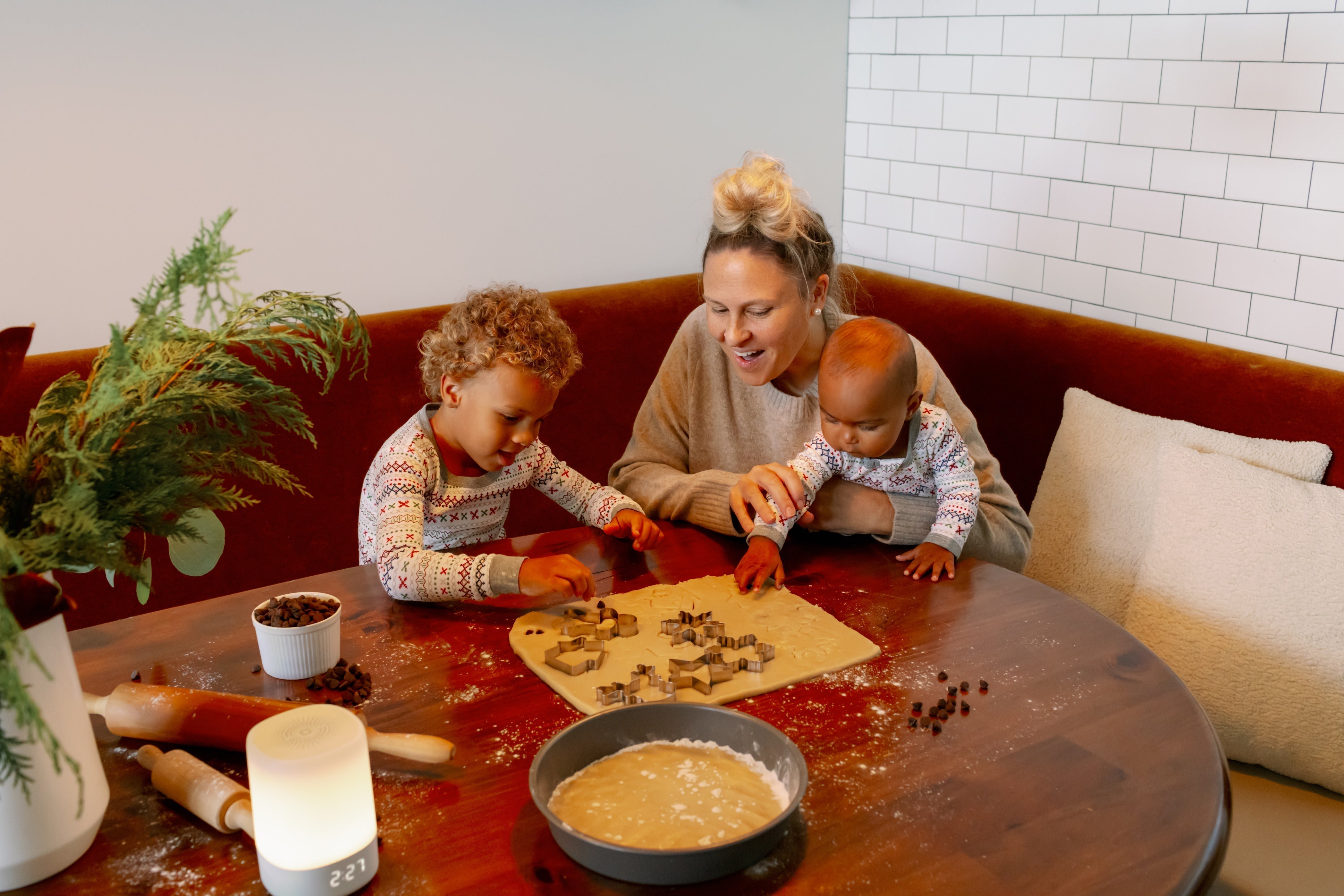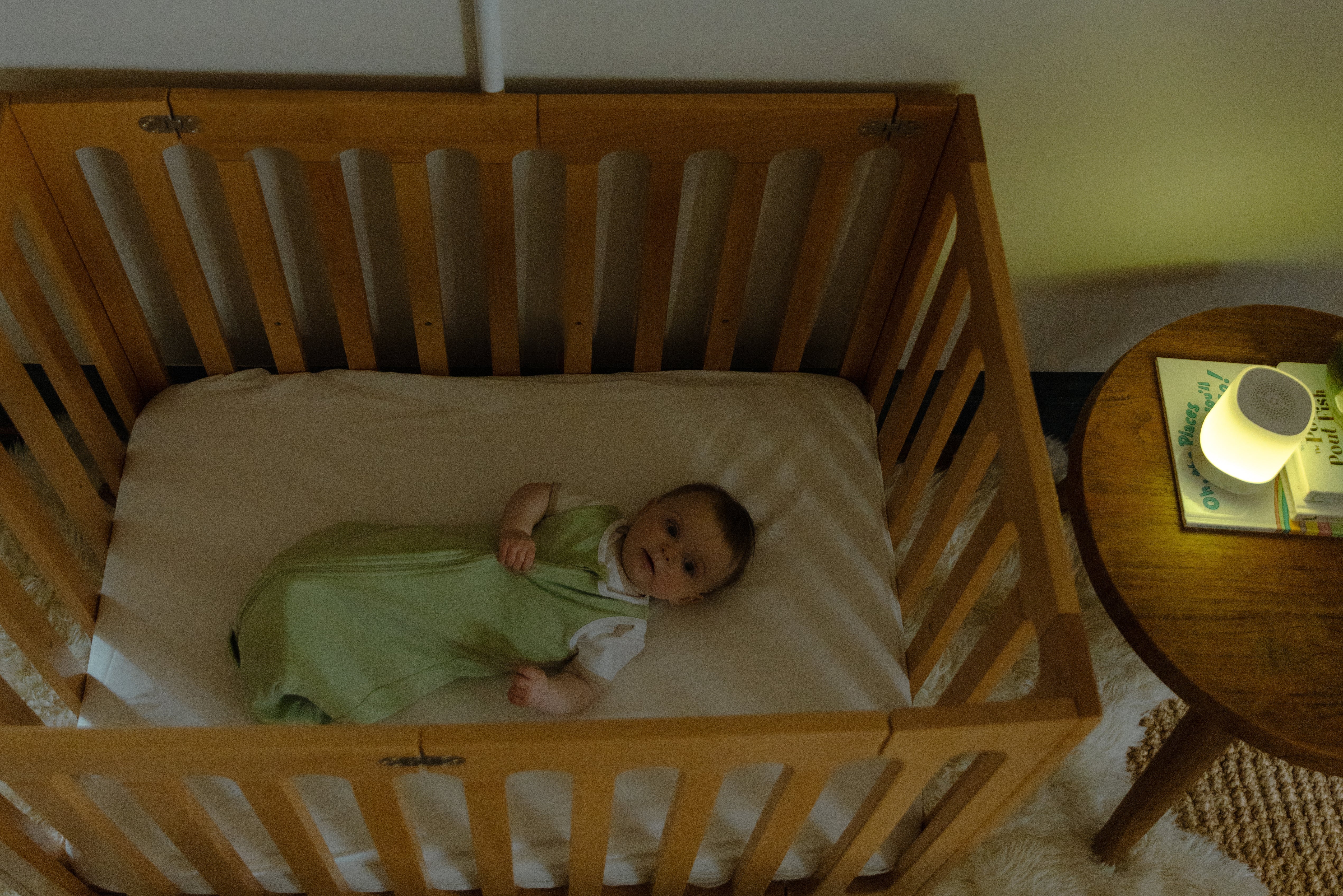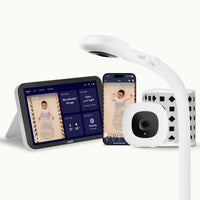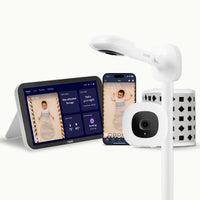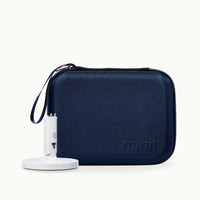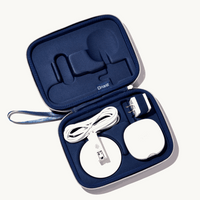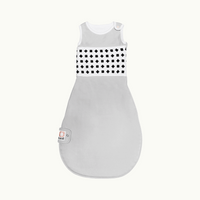Do babies need a nightlight?
For parents, every tiny decision has the potential to become an elaborate debate. The choices you make for your child’s life, particularly when they involve their sleep, can feel crucially important. If you find yourself asking, “Do babies need a nightlight?” you’re not alone.
Nightlights can be a valuable addition to your baby's nursery, but the key lies in how you use them. Let's explore the ways you can incorporate nightlights into your baby's bedtime routine, without disrupting your little one's slumber.
Should babies sleep with the lights on or off?
For parents, a nightlight can be a great help in the nursery, since it emits a gentle glow that can illuminate the room and offer clarity for any middle-of-the-night needs (feedings, diaper changes, nightmares, etc.) without fully waking the baby.
Babies sleep better in a dark room, so keep the nightlight handy for the bedtime routine and middle-of-the-night visits, but turn the lights off when the baby is asleep.
Benefits of darkness for baby sleep
Creating a dark sleep environment for your baby is key to promoting restful sleep. Darkness helps signal to your baby that it's time to rest, allowing them to establish a strong association between nighttime and sleep. Here's why darkness is vital for your baby's sleep quality:
- Melatonin production. Darkness triggers the production of melatonin, a hormone that regulates sleep-wake cycles and helps your baby fall—and stay—asleep.
- Quality sleep. A dark room fosters deeper, more restorative sleep, ensuring your baby is well-rested.
- Reduced sleep disruptions. Darkness minimizes the chances of your baby waking up during the night, promoting longer sleep stretches.
When and how to use a nightlight effectively
Now that we've covered the importance of darkness for your baby's sleep quality let's explore when and how to effectively use a nightlight:
-
Bedtime routines. While babies sleep better in a dark room, nightlights can play a supportive role in their bedtime routine. The soft glow emitted by a nightlight provides a reassuring ambiance that helps babies (and of course, older children, too) feel secure and comfortable. You can use the nightlight as part of their nightly routine, then shut it off when your baby goes to sleep.
- Night feeds and diaper changes. Newborns have a knack for keeping parents on their toes, especially during the night. Nightlights become valuable allies in those twilight hours. When your baby wakes up for nighttime diaper changes or feedings, the gentle glow of a nightlight can illuminate the room and provide clarity for your tasks without fully waking your baby. This practical compromise between light and darkness ensures you can tend to your baby's needs with ease, reducing fumbling in the dark and helping you both get back to sleep faster.
- Daytime waking routines. Nightlights are not limited to nighttime use; they can also assist with daytime waking routines. When your baby wakes up from a nap during the day, the illumination from a nightlight can create a soothing and familiar environment, making the transition from sleep to wakefulness smoother for your baby.
How to choose a nightlight for your baby
Choosing a nightlight for your baby may initially seem like a straightforward task. If it’s a light and plugs in, then it works—right? However, there’s more to nightlights than a simple on/off switch.
The right nightlight can transform your baby's sleep environment into a cozy, comforting sanctuary. Thanks to a number of modern features, you can find a nightlight that suits your baby’s health, sleep needs, and comfort, as well as recreating a routine away from home. To ensure you make the best choice, consider these factors when selecting the perfect nightlight:
- Brightness and brilliance. Across the season, darkness levels change and shift—and your nightlight's brightness should do the same. Look for a nightlight that boasts adjustable brightness levels, so that you can customize your baby’s sleep environment for a restful experience. Ideally, you can up the brightness during diaper changing or feeding.
- Color settings. Do you know the bright, near-silver white lights of fluorescents? While eco-friendly, these bulbs are not the best choice for a calming nursery. Seek nightlights that emit warm, soothing hues that promote relaxation, like soft amber or gentle white. Even better, these softly colored lights won’t interfere with your baby’s budding circadian rhythm as much, allowing them to learn that nighttime means sleep.
- Safety features. Nothing is more important than your baby's safety. When selecting a nightlight, scrutinize its safety features closely. Ensure that it won’t heat up excessively. Additionally, look for models that have earned a safety certification and are free of small parts that could pose a choking hazard.
- Style and ambiance. Your baby's nursery is a canvas for creativity, filling your little one’s senses with beauty and inspiration. Nightlights can be an outlet for this creativity, offering a diverse range of styles for your home decor. In fact, nightlights with multiple color settings can also provide ambiance during daytime, bathing the room in a colored light of choice or projecting a whimsical image onto the walls.
- Power preference. The power source of your nightlight can impact its versatility and reliability. Plug-in nightlights ensure continuous operation, but they can limit placement options. On the other hand, portable nightlights with rechargeable or replaceable batteries offer flexibility, but they may provide unreliable light. Consider which power source benefits your child the most.
Best nightlight features for babies
Baby nightlights have come a long way from the plug-and-go models of the past. Today, nightlights are technological marvels designed to cater to your baby's every need, all while adding a touch of magic to their sleep space.
Depending on your baby’s needs, you may prefer different add-ons for your nightlight:
- Adjustable brightness
- Color options
- Soundscapes and lullabies
- Smartphone connectivity
- Timers and sleep modes
- Temperature sensors
- Ability to remotely control from your smartphone
Set a sleep-ready mood with Nanit
Whether it’s your first or fifth child, raising a baby can turn any decision into an anxious choice. When it comes to the question, “Should babies sleep with lights on or off?” know that it is advisable for babies to sleep in a dark room. However, nightlights can still have their place in the nursery, mainly during bedtime routines, night feedings, and daytime waking routines. They provide a soft glow that adds to the coziness of the nursery while helping parents with those middle-of-the-night needs.
With Nanit’s modern, high-quality designs, you can turn any nursery into a slumber paradise. Our Sound + Light machine includes 11 soothing sounds, color-customizable lights, and Cry Detection—all controllable from the Nanit app on your smartphone. If you’re wondering, “Do babies like white noise?”—studies have shown that the answer is a resounding yes. That's why our machine also offers white noise to help your baby sleep soundly.
Additionally, if you’d like to keep an extra eye on your baby during sleep, consider the Nanit Pro Camera. With its high video quality, white noise, sleep scores, and more safety features, it’s one of the tools you’ll want to send your baby off to dreamland with confidence.
Key takeaways
- Creating a dark sleep environment is essential to promote a baby’s restful sleep, as darkness triggers melatonin production, leads to deeper sleep, and minimizes sleep disruptions.
- Nightlights can play a valuable role in your baby's bedtime routine and nighttime feedings. Using them strategically ensures that your baby feels secure and comfortable while still enjoying the benefits of a dark room during sleep.
- When choosing a nightlight for your baby, consider factors like adjustable brightness, warm color settings, safety features, style, and power source to create a cozy and practical sleep environment.
Sources:
Baby Sleep Science. Should you use a night light in your child's room? https://www.babysleepscience.com/single-post/should-you-use-a-night-light-in-your-child-s-room
NIH. PERSPECTIVE: The Long-Term Effects of Light Exposure on Establishment of Newborn Circadian Rhythm. https://www.ncbi.nlm.nih.gov/pmc/articles/PMC6175794/
The Journal of Biological and Medical Rhythm Research. Effect of light on human circadian rhythm. https://www.tandfonline.com/journals/icbi20
What to Expect. When Will Your Baby Sleep Through the Night? https://www.whattoexpect.com/first-year/sleeping-through-the-night.aspx

